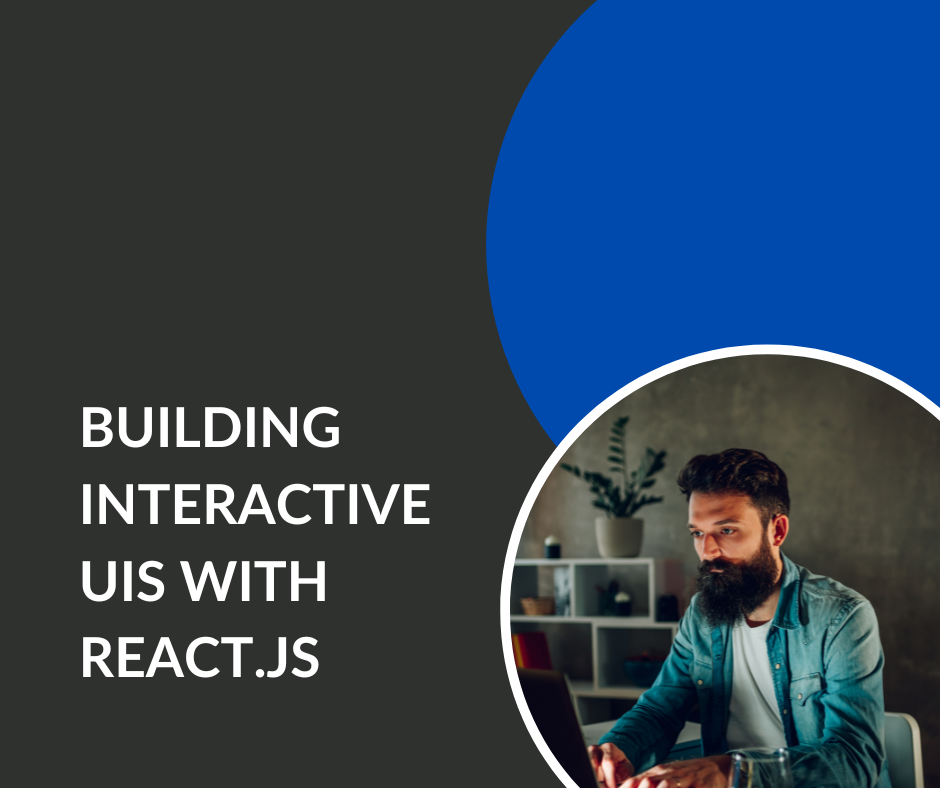Building Interactive UIs with React.js
 khushnuma
khushnuma
React.js, developed by Facebook, is a popular JavaScript library for building user interfaces (UIs), particularly single-page applications where efficiency and a seamless user experience are paramount. Its component-based architecture, virtual DOM, and declarative nature make it an excellent choice for creating dynamic and interactive UIs. This guide will explore the fundamentals of React.js and its key features, providing insights into why it's widely adopted and how it enhances the development process.
Understanding React's Core Concepts
Components: The Building Blocks
- React applications are built using components, which are reusable and self-contained pieces of code that define a part of the UI. Components can be either class-based or functional, with the latter being more prevalent due to React’s Hooks API. Each component manages its own state and renders UI elements based on that state, allowing for a modular and organized code structure.
JSX: Syntactic Sugar for Easier Coding
- JSX (JavaScript XML) is a syntax extension that allows developers to write HTML-like code within JavaScript. This makes the code more readable and easier to understand. JSX is not mandatory, but it is widely used because it simplifies the process of writing React components.
Virtual DOM: Enhancing Performance
- One of React's standout features is the virtual DOM. Instead of directly manipulating the real DOM, React creates a lightweight copy of it. When the state of a component changes, React updates the virtual DOM first. It then efficiently calculates the minimum number of changes needed to update the real DOM. This process significantly enhances performance, especially in applications with frequent updates.
State and Props: Managing Data Flow
- State and props are essential concepts in React for managing data. The state is an internal data storage mechanism used within components, allowing them to react to changes and re-render accordingly. Props, short for properties, are read-only attributes passed from parent to child components, facilitating communication and data sharing between components.
Key Features of React.js
Declarative UI
- React promotes a declarative style of programming, which means developers describe what the UI should look like for different states, and React takes care of updating the DOM to match this description. This approach makes the code more predictable and easier to debug.
Component-Based Architecture
- The component-based architecture allows developers to break down complex UIs into smaller, manageable pieces. Each component can be developed, tested, and debugged independently, which enhances productivity and code maintainability.
Unidirectional Data Flow
- React enforces a unidirectional data flow, meaning data flows in a single direction from parent to child components. This makes it easier to understand how data changes affect the application, leading to more predictable and easier-to-debug applications.
React Hooks
- Introduced in React 16.8, hooks allow developers to use state and other React features in functional components. Common hooks include useState for state management and useEffect for handling side effects like data fetching. Hooks simplify code and enhance reusability by enabling logic to be shared across components.
Advantages of Using React.js
Enhanced Performance
- React’s virtual DOM and efficient diffing algorithm ensure high performance, making it suitable for applications requiring frequent updates and real-time interactions.
Reusable Components
- The ability to create reusable components speeds up the development process and ensures consistency across the application. Developers can build a library of components and use them across different projects.
Strong Community Support
- React has a large and active community, providing extensive resources, libraries, and tools. The strong community support helps developers solve problems quickly and stay updated with the latest best practices.
SEO-Friendly
- React can be rendered on the server side using tools like Next.js, improving the SEO of web applications. Server-side rendering ensures that search engines can crawl and index the content effectively.
Getting Started with React
To start building with React, you need a basic understanding of HTML, CSS, and JavaScript. Here’s a simple roadmap to get you going:
Set Up Your Environment
- Install Node.js and npm (Node Package Manager). Use npx create-react-app my-app to quickly set up a new React project with all necessary configurations.
Learn JSX and Components
- Familiarize yourself with JSX syntax and start creating functional components. Experiment with passing props and managing state.
Explore Hooks
- Learn about React Hooks and how to use them to manage state and side effects in functional components.
Build and Deploy
- Build small projects to practice. Use services like GitHub Pages, Netlify, or Vercel to deploy your React applications and share them with others.
Conclusion
React.js is a powerful tool for building interactive and dynamic user interfaces. Its component-based architecture, virtual DOM, and declarative nature streamline the development process, making it a favorite among developers. By understanding its core concepts and leveraging its key features, you can create efficient, maintainable, and high-performing web applications. Whether you are building a small personal project or a large-scale enterprise application, React.js provides the tools and flexibility needed to bring your ideas to life. If you're looking to become proficient in React.js and other essential technologies, consider enrolling in a Full Stack Developer Course in Gwalior, Lucknow, Delhi, Noida, and other locations across India. These courses offer comprehensive training that can help you master the skills needed to excel in today's competitive tech landscape.
Subscribe to my newsletter
Read articles from khushnuma directly inside your inbox. Subscribe to the newsletter, and don't miss out.
Written by

khushnuma
khushnuma
I am a Digital Marketer and SEO Specialist; I enjoy technical and non-technical activity. I enjoy learning something new. My passion and urge to gain new insights into lifestyle,